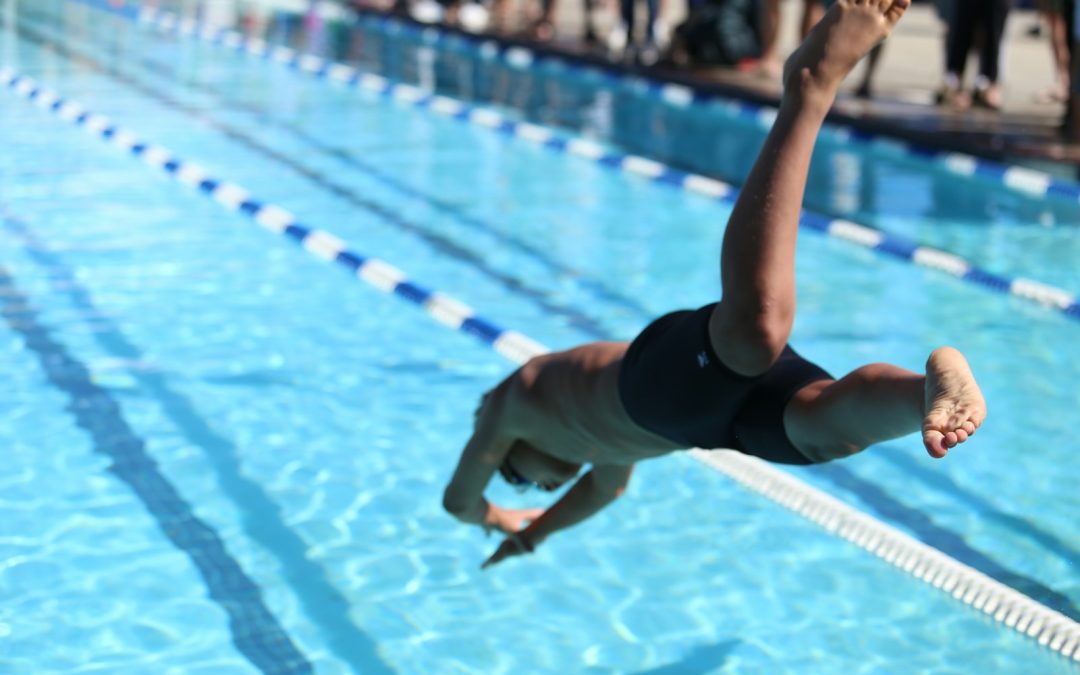Shoulder pain when Swimming: Causes, Prevention, and Management
Swimming is an excellent full-body workout, renowned for its cardiovascular benefits and low-impact nature. However, even in this seemingly gentle sport, shoulder pain when swimming is a common issue, particularly for competitive swimmers and those who swim frequently.
This blog will explore the causes of shoulder pain when swimming, how to prevent it, effective management strategies, and provide a summary of key takeaways.
The 4 main causes of shoulder pain when swimming
The shoulder joint is one of the most complex and mobile joints in the human body, allowing for a wide range of motion. However, this mobility also makes it particularly susceptible to injury, especially in sports that require repetitive overhead motion, such as swimming. Understanding the causes of shoulder pain when swimming is essential for both prevention and effective treatment. The causes include:
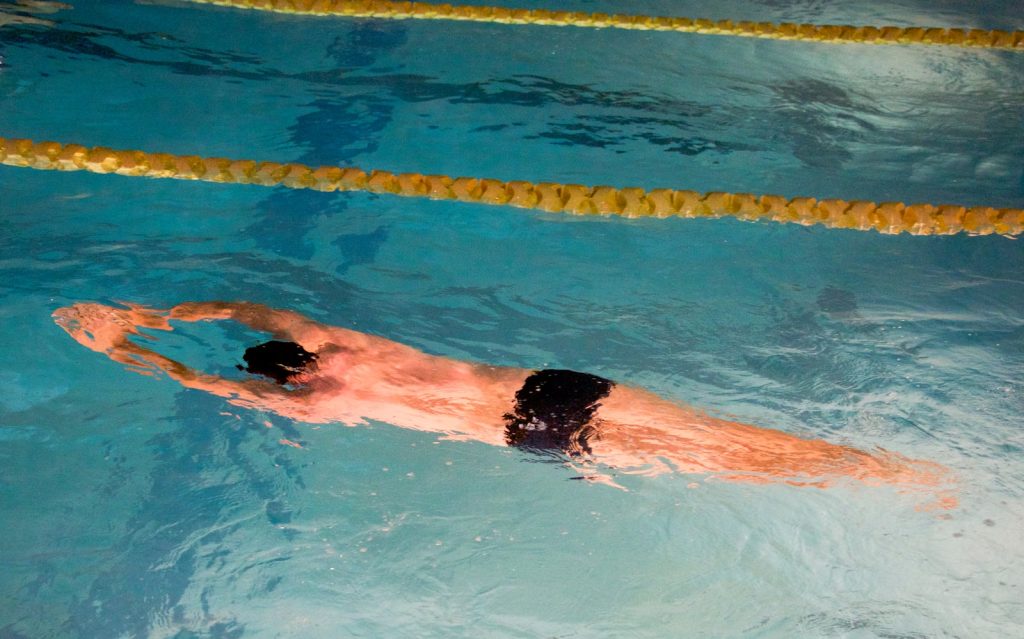
1. Overuse and Repetitive strain:
One of the primary causes of shoulder pain when swimming is overuse. Swimming involves repetitive overhead movements, particularly in strokes like freestyle, butterfly, and backstroke. This repetition can lead to microtrauma in the shoulder muscles, tendons, and ligaments over time.
The cumulative effect of these small injuries can result in inflammation, pain, and even more serious conditions like swimmer’s shoulder or rotator cuff tendinitis.
2. Poor Technique
Swimming with improper technique can place undue stress on the shoulder joints. Common technical errors include dropping the elbow during the pull phase of the stroke, crossing the midline of the body with the hand during the stroke (known as “crossover”), or over-rotating the body. These mistakes can alter the mechanics of the shoulder joint, leading to excessive strain on certain muscles and tendons, which increases the risk of shoulder pain when swimming.
3. MUSCLE IMBALANCES
Swimmers often develop strong muscles in certain areas, particularly the front of the shoulder and chest, while neglecting others, such as the muscles of the upper back and rotator cuff.
This imbalance can lead to poor posture and altered shoulder mechanics, both of which contribute to shoulder pain when swimming. The anterior (front) muscles become overactive, pulling the shoulder forward and out of its natural alignment, which can lead to impingement and other painful conditions.
5. insufficient Warm-UP
Skipping a proper warm-up before swimming is another common cause of shoulder pain. The shoulder joint, with its extensive range of motion, requires careful preparation before being subjected to the rigours of swimming. Without a sufficient warm-up, the muscles and tendons are less flexible and more prone to injury, increasing the likelihood of experiencing shoulder pain when swimming.
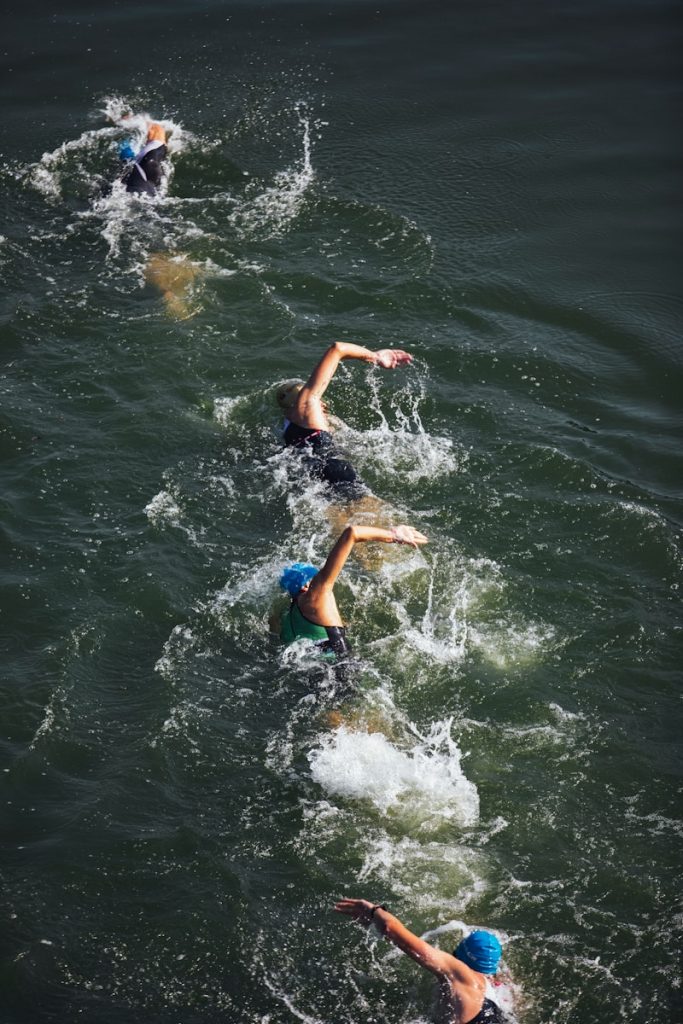
4 strategies to Prevent shoulder Pain when swimming
While shoulder pain when swimming is common, it is not inevitable. By taking proactive steps, swimmers can significantly reduce their risk of injury and maintain healthy shoulders throughout their swimming career.
1. focus on technique
One of the most effective ways to prevent shoulder pain when swimming is to ensure proper technique. Working with a coach or trainer to refine your stroke mechanics can help you avoid the common errors that lead to shoulder injuries. Key aspects to focus on include maintaining a high elbow during the pull phase, avoiding crossing the midline of the body, and ensuring balanced body rotation.
2. strengthen the rotator cuff
The rotator cuff is a group of muscles and tendons that stabilise the shoulder joint. Strengthening these muscles is crucial for preventing shoulder pain when swimming. Incorporating exercises like external rotations, internal rotations, and scapular stabilising exercises into your training routine can help build a strong, resilient rotator cuff that can better withstand the demands of swimming.
3. improve flexibility
Flexibility plays a critical role in preventing shoulder pain when swimming. Tight muscles can limit the range of motion of the shoulder joint, leading to compensatory movements that increase the risk of injury. Regular stretching, particularly of the chest, shoulders, and upper back, can help maintain the flexibility needed for efficient, pain-free swimming.
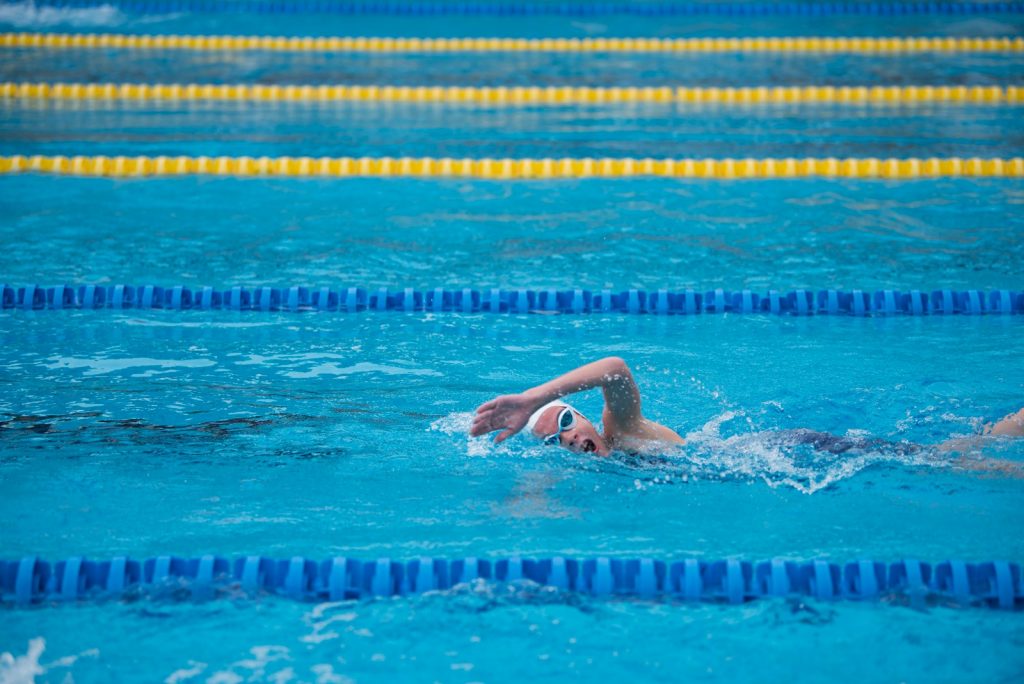
4. adequate warm-up routine
A thorough warm-up is essential to prepare your shoulders for swimming. A good warm-up should include dynamic stretches and movements that mimic the actions you’ll perform in the water. For example, arm circles, shoulder shrugs, and resistance band exercises can help increase blood flow to the shoulder muscles, improve flexibility, and reduce the risk of shoulder pain when swimming.
managment of shoulder pain when swimming
If you experience shoulder pain when swimming, it’s important to address it promptly to prevent it from becoming a more serious issue. Effective management strategies can help alleviate pain, promote healing, and get you back in the pool safely.
1. Rest & recovery
The first step in managing shoulder pain when swimming is to allow adequate rest. Continuing to swim through pain can exacerbate the injury and lead to chronic problems. Reduce your training intensity, giving your shoulder time to heal. During this period, focus on other forms of low-impact exercise that don’t strain the shoulder, such as cycling or doing swimming drills that limit arm movement, focusing on kick sets.
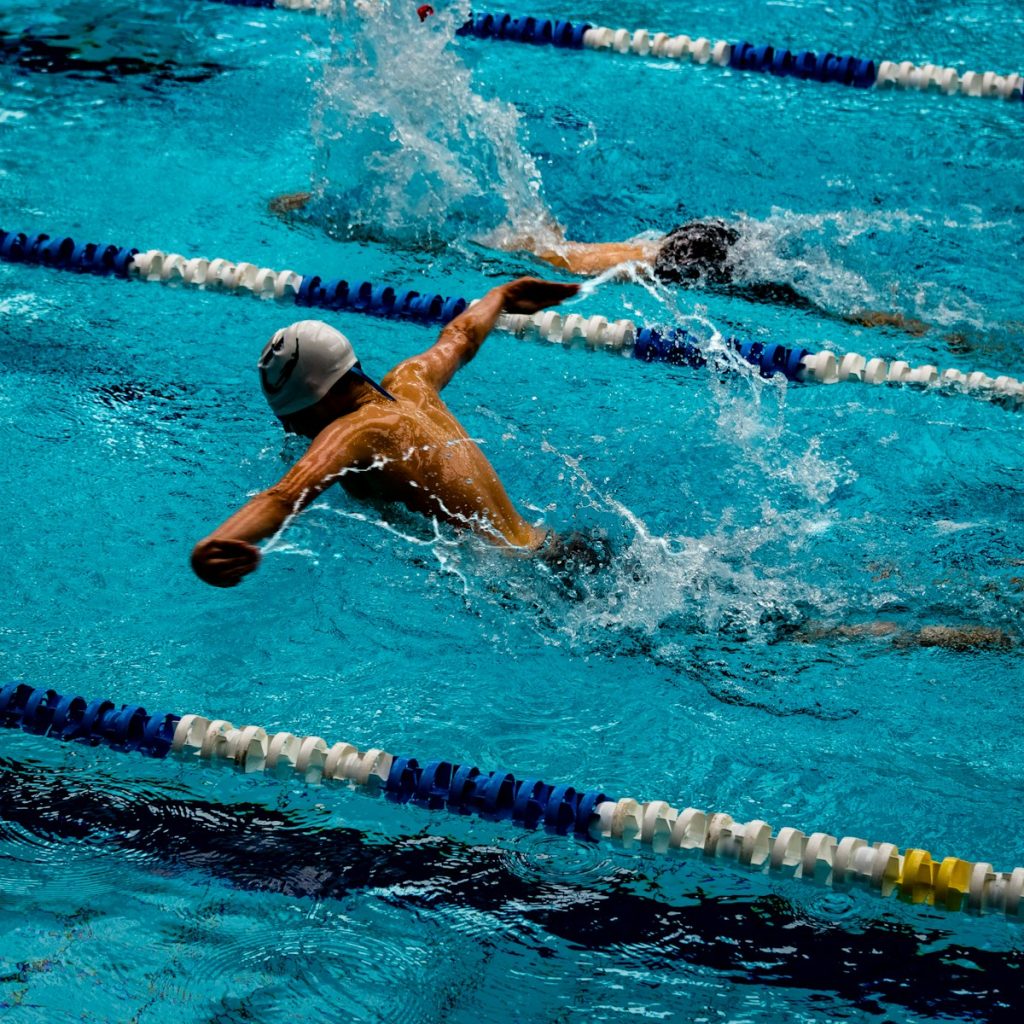
2. Nutrition
Nutrition plays a crucial role in healing tendon injuries by providing essential nutrients for tissue repair, inflammation control, and overall recovery. A diet rich in the key nutrient below can significantly enhance tendon healing, reduce inflammation, and prevent future injuries:
- Protein and Amino Acids:
Tendons are primarily composed of collagen, a protein made from amino acids like glycine, proline, and lysine. Consuming protein-rich foods (e.g., lean meats, fish, eggs) supports collagen synthesis and muscle stabilisation, aiding tendon repair.
- Vitamin C:
Essential for collagen synthesis, vitamin C is crucial for tendon repair. It also has antioxidant properties that reduce inflammation and oxidative stress, promoting efficient healing. Citrus fruits, strawberries, and bell peppers are rich sources.
- Omega 3 Fatty Acids:
Found in fatty fish and flaxseeds, omega-3s reduce inflammation and enhance blood flow, ensuring that tendons receive necessary nutrients for recovery.
- vitamin A:
Important for cell growth and immune support, vitamin A helps regenerate tendon cells. Carrots, sweet potatoes, and spinach are good sources.
- Zinc:
Vital for tissue repair and immune function, zinc supports collagen synthesis and helps reduce inflammation. It is found in meat, shellfish, and whole grains.
3. Ice and Anti-inflammatory measures
Applying ice to the affected shoulder can help reduce inflammation and alleviate pain. Ice should be applied for 15-20 minutes several times a day, particularly after swimming or any activity that aggravates the pain. Over-the-counter anti-inflammatory medications, such as ibuprofen, can also be used to manage pain and reduce inflammation, but should be taken as directed and with caution.
4. Physical Therapy
If shoulder pain persists despite rest and home care, seeking the help of a physical therapist can be beneficial. A physical therapist can assess your shoulder pain when swimming, identify the underlying cause, and develop a tailored rehabilitation program. This program might include stretching, strengthening exercises, manual therapy, and techniques to improve your swimming mechanics.
5. Gradual return to swimming
Once the pain has subsided and you’ve regained strength and flexibility, it’s important to return to swimming gradually. Start with shorter, less intense sessions, focusing on perfecting your technique and monitoring for any signs of recurring pain. Gradually increase the duration and intensity of your swims as your shoulder tolerates it, and continue with preventative measures like strength training and proper warm-ups to keep your shoulders healthy.
conclusion on addressing shoulder pain when swimming
Shoulder pain when swimming is a common issue that can significantly impact a swimmer’s performance and enjoyment of the sport. The causes are often related to overuse, poor technique, muscle imbalances, and inadequate warm-ups. However, by focusing on prevention—through proper technique, strength training, flexibility, and warming up—you can reduce the likelihood of injury.
If shoulder pain does occur, it’s crucial to manage it effectively with rest, ice, physical therapy, and a gradual return to swimming. Taking these steps can help you recover fully and prevent future shoulder issues.
In conclusion, while shoulder pain when swimming is a challenge many swimmers face, it doesn’t have to be a permanent or recurring problem. With the right approach to prevention and management, you can enjoy a long, healthy swimming career free from shoulder pain. Prioritising shoulder health not only enhances your performance in the water but also ensures that swimming remains a sustainable and enjoyable activity for years to come.
If you wish to seek further help or speak to a practitioner about any of the above, call us on 0800 731 2738 or book online here.
You can also view all the services we provide within our clinics on our website, as well as checking out our other blogs and content.
For more free tips and information, make sure to follow our Facebook and Instagram pages. We also post client stories, so you can see how we’ve helped people get back to doing the things they enjoy!
